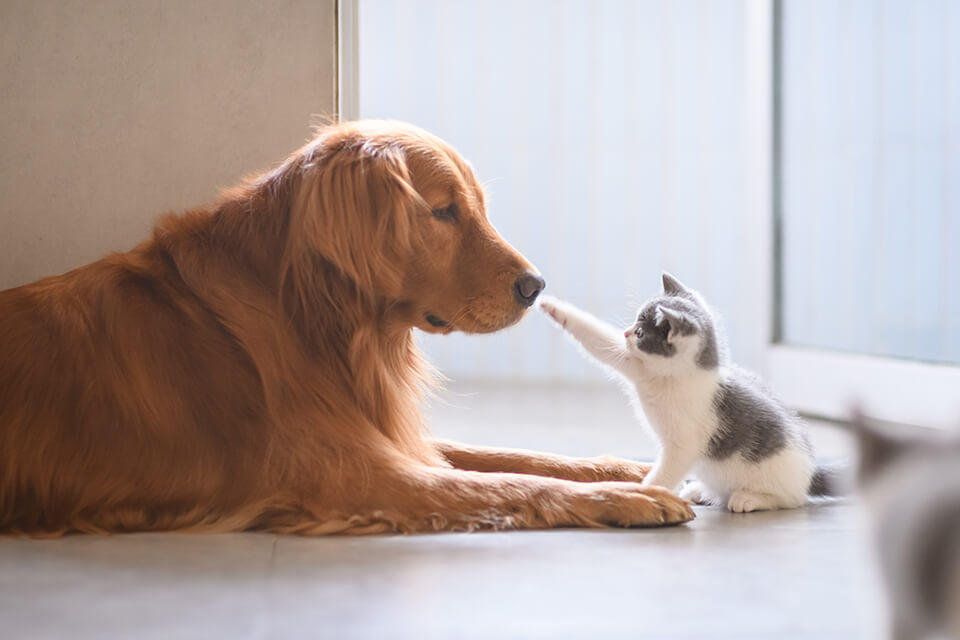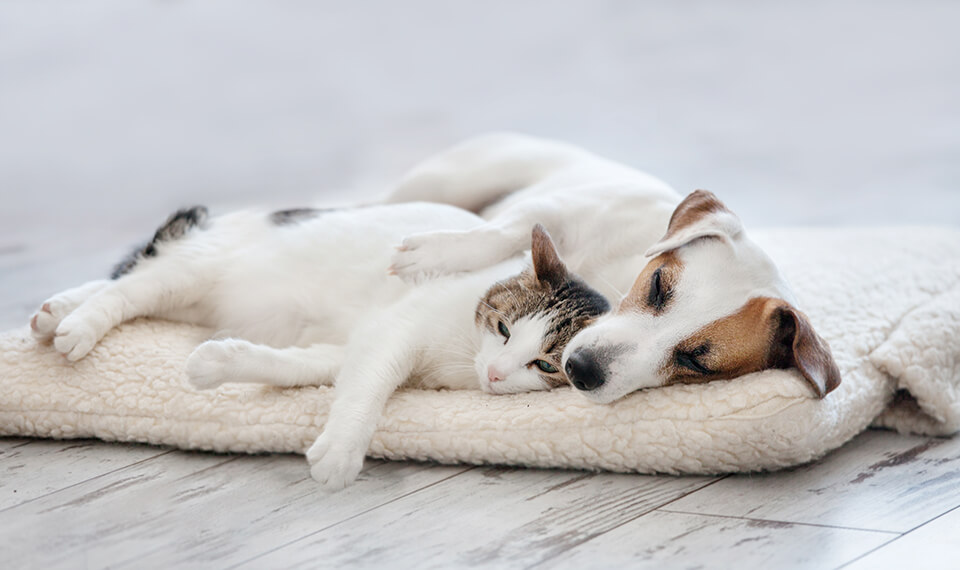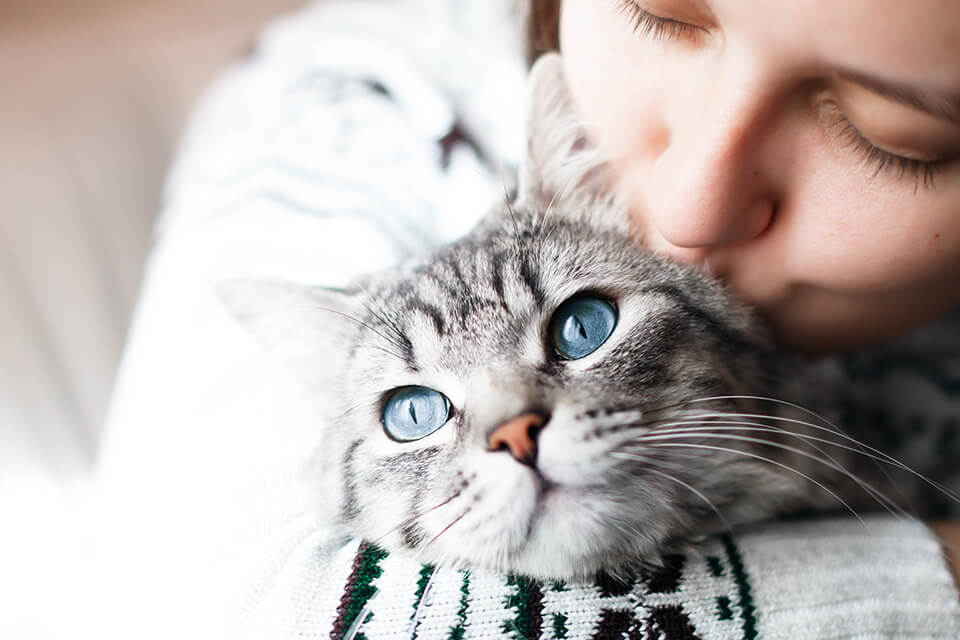How a Pet Massage Can Help Your Dog and Cat
Do you enjoy a good back rub when feeling tired, anxious, or sore? Yes, many people do. And did you know that your dog or cat might enjoy a pet massage just as much as humans do?

This practice has been expanding in the US in recent years. Although holistic animal care is not yet mainstream, its influence is evident not only in private use, but also in zoos, wildlife rehabilitation centers, and preserves. Alternative therapists use a variety of styles, such as rubbing, acupressure, reiki, or the famous TTouch (Tellington Touch). Although dog owners are the most frequent customers of pet salons that offer this service, it’s not unusual to see cats enjoying themselves on the table with their eyelids closed.
So, let’s take a look at why this technique is so popular, and what positive effects it might have on your pet’s health and mood.

The Origins of Pet Massage
If you think that the power of a gentle touch and circular motions is an invention of modern ages, it’s not – its origins can be traced to 2700 BC in China. Greeks, Romas, Egyptians, Persians, Turks, and the Japanese later adopted these techniques and continued to develop them. Probably the oldest records about this healing process are early Egyptian hieroglyphics depicting healers and animals.
Horse massaging was a common practice in ancient China and Rome, and it was repopularized in the 1970s and ’80s by the United States equestrian team. After that, during the early ’90s, skillful practitioners started to apply this technique to dogs and cats.

How Can Your Dog or Cat Benefit From a Massage?
Every animal loves when you pet it, cuddle it, and rub its belly, but have you ever tried to give your companion a proper back rub? While petting does provide a friendly touch and loving attention, a massage goes beyond this. Physical contact has multiple positive effects, so if you’re not sure whether you should start massaging your pup or kitten, stop thinking and start doing it. You can do it at home, on the table or the floor, depending on where you find it more comfortable.
We’ve put together a list of crucial benefits to your pup’s or cat’s health that you’ll notice when you introduce this into their daily routine. So keep reading and enrich your evenings with a new bonding activity.
Stress and Anxiety Reduction
Some animals react oddly or unpredictably to external stimuli, and it usually takes time to calm them down. Massaging gets them used to physical touch, and it can ease their tension and help them relax. Regular treatment will help keep your pooch calmer in the future.
Healing Aid
Specific injuries, such as damaged tissues or arthritis, can be treated effectively with a good rubdown. Thanks to gentle pressure and palpation, your dog’s mobility and flexibility could be restored and improved. Just keep in mind that this type of treatment should be administered only by a registered dog therapist.
Also, large breed dogs might go through increasing pain when their bones grow faster than muscles. This occurs with particular frequency in younger canines, and rubbing has had excellent results in these cases.
A Massage Can Improve Bodily Functions
If your pup has health problems or difficulties with some internal organs, this treatment can do wonders in the following situations:
- Increases blood circulation
- Decreases blood pressure
- Improves lymphatic fluid movement
- Aids digestion
- Stimulates liver and kidneys
- Encourages deeper breathing
It’s Good for General Wellbeing
A gentle touch can lower the level of stress hormones and boost the immune system. Also, focus is one of the significant preconditions that should be met during obedience training and tricks training. Regular massages can improve your dog’s performance and make future training easy. Above all, they promote longevity and your animal’s overall health.
Improves Your Relationship
A gentle and caring touch can be described as a pathway to love. That being said, regular treatments can develop a strong bond between an animal and its keeper. Many dogs and cats with emotional issues (shyness, distrust, or depression) respond very well to the relaxation and the power of touch. Young pets can become accustomed to the technique, making it easier to calm them down for grooming and medical care later on.
How to Massage Dogs and Cats
The main difference between human and animal massages is in the pressure – with dogs and cats, it should be gentle and slow. Here are several rules to follow before starting with canine or felines treatment at home:
- Your pup should be relaxed and in a calm state of mind.
- Start by petting all over their body. Talking to them and touching them at the same time could have positive effects on their peace of mind.
- The neck should be massaged with circular motions, keeping your pressure soft and gentle.
- Shoulders should be regions of specific interest since dogs can’t reach them. So, this touch might provide them with exceptional pleasure.
- Be careful with legs and paws, because some canines don’t like to be massaged there. If your pooch doesn’t mind, continue, but be cautious and tender.
- The back and both sides of the spine and tail area are the last stages – after that, your pup should be stress-free and tranquil.

Which States Regulated the Practice
Unfortunately, animal massage is still considered a legal gray area in many states. For example, in Arkansas, Arizona, and Maine, it has the status of a medical procedure, and veterinarians don’t have a permit to perform it. In other states, such as Alaska, Delaware, Louisiana, and Alabama, unlicensed therapists have permission to work with pets, but only in vet offices. The third group of states, which includes Oklahoma, South Carolina, and Oregon, permit veterinarians to delegate treatments.
So, if you want to treat your companion with professional pet grooming services, check the regulations in your state and find out if there are pet salons that provide massages besides grooming.

Pet Salons Can Provide You With Professional Care
When looking for the right professional service for your canine or feline, you should consider only a trained person certified for animal massage. These therapists mainly work with dogs and horses using their hands-on techniques, and they may collaborate with veterinarians. Also, they can work in grooming salons, which can be an excellent opportunity for a well-rounded spa day instead of a regular fur and nails trim. Even more importantly, a pet massage might be a preventive measure when it comes to particular health issues – you may notice soreness or swellings on the body you haven’t spotted before.
Gentle massages can be the best option for relaxation and anxiety reduction, while deeper muscle massages should be less frequent. The right decision is to entrust your beloved animals to trained practitioners, while you can carry out gentle strokes and touches at home whenever it suits you and your faithful friend.